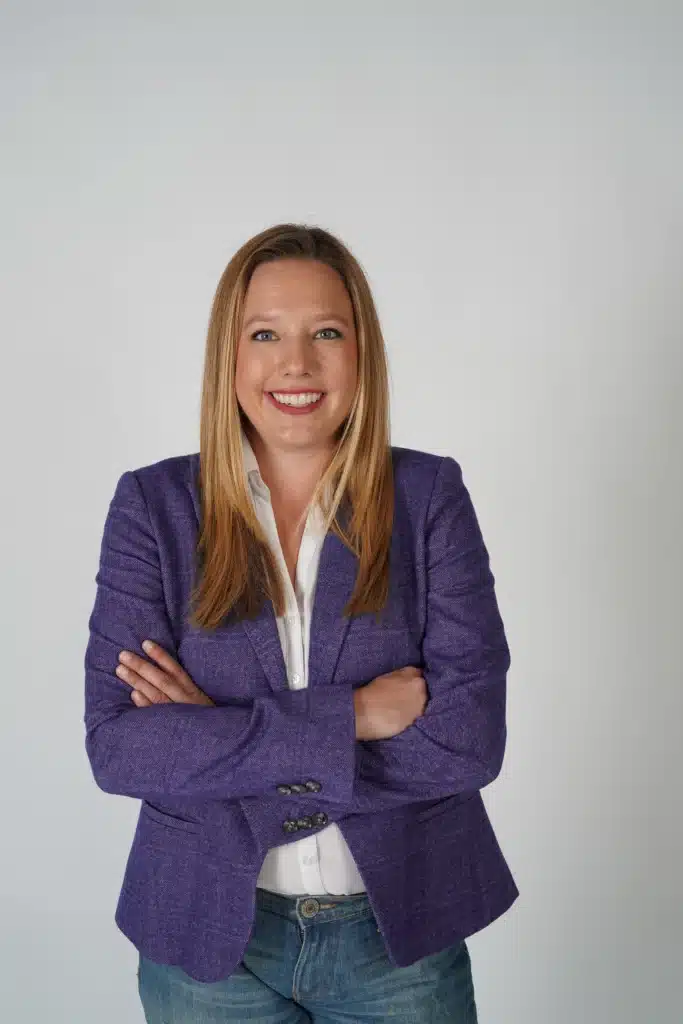Local Influencer Marketing Strategies for Fort Worth Brands
If your small business serves Fort Worth and you’re trying to reach more locals, Fort Worth influencer marketing can be a powerful lever. But it’s not just about influencer celebrities with millions of followers — it’s about real people in your community who already command trust. With influencer identification, strategic collaboration, and meaningful impact measurement, you can tap into local networks and drive authentic, measurable growth.

In this article, we’ll walk you through a Fort Worth influencer marketing approach — how to find the right influencers, structure partnerships, run campaigns, and measure success. You’ll see how local collaborations differ from national ones, how to protect your brand, and how to make influencer marketing an ongoing advantage, not just a one-off experiment.
Whether you’re a restaurant in Near Southside, a boutique in West 7th, or a service provider across DFW, this guide will help you use Fort Worth influencer marketing in a way that feels authentic, measurable, and aligned with your goals.
And if you’re ready to take your first step, we share resources and local examples throughout. You can also explore more social media insights on our Panther City Digital Marketing blog.
Why Local Influencer Marketing Matters in Fort Worth
Influencer marketing has exploded globally, but local influencer efforts offer unique advantages that too many businesses overlook.
The power of local trust & relevance
When someone sees a recommendation from a person they recognize — maybe someone posting from TCU, or someone they see at local events — that endorsement carries more weight. Local influencers are embedded in the community, and their followers often overlap with your customer base.
That relevance matters more than massive audiences. GRIN notes that collaborating with local creators (rather than high-follower but irrelevant ones) yields better engagement and ROI. Grin
Differences vs national influencer strategies
- Audience overlap is higher locally
- Lower costs — local influencers often accept barter, smaller fees, or content exchanges
- Greater flexibility for in-person events, co-hosted local content, and storytelling
- Easier logistics for product delivery, visits, and oversight
National influencer campaigns often deliver reach but lack local depth. Local campaigns give you relevance, authenticity, and higher conversion potential.
The Fort Worth Influencer Marketing Landscape
Where to find influencers in Fort Worth? One list of “Top 20 Fort Worth Influencers in 2025” offers a starting point.
Many local creators focus on neighborhoods, food, culture, lifestyle, events, or micro-niches. Mapping these creators helps you see which align with your brand. American Press Institute calls such creators “niche content creators” — those focusing on local food, events, or interest areas — and notes they often have strong community impact.
Because Fort Worth has distinct neighborhoods (Near Southside, TCU, Alliance, etc.), many local influencers have micro-niches tied to those zones. You can segment campaigns by zone to test performance (e.g. influencer campaigns in TCU zone vs. West 7th).
How to Identify the Right Influencers

Finding the right influencers is a mix of art + method. Here’s how to do it well.
Types of influencers: macro, micro, nano, community leaders
- Macro influencers (100K+ followers) often bring reach but may lack local authenticity
- Micro influencers (5K–50K) often have niche, engaged communities
- Nano influencers (<5K) are extremely local — good for neighborhood campaigns
- Community leaders / offline influencers — local business owners, event organizers, nonprofits — they may not have huge follower counts but strong local influence (American Press Institute highlights this)
Mixing types gives you both reach and depth.
Tools & platforms to find influencers
- Influencer platforms (e.g. Upfluence, Aspire, TikTok creator tools)
- Social media native search (hashtags + geotags)
- Listening to local mentions or tags
- Keeping an internal directory once you find good ones
Gelato’s guide suggests monitoring local hashtags and geotags to uncover creators in your area.
For more tools, visit our digital marketing resources page.
Vetting authenticity, engagement & alignment
When you find candidates, check:
- Real follower-to-engagement ratios (avoid huge audiences with low interaction)
- Content quality and tone — does it match your brand?
- Past partnerships — whether they’ve worked with businesses before
- Audience demographics — verify locality, interests
- Comments & sentiment — are they well-received?
Use local hashtags, geotags & events
Search tags like #FortWorthFoodies, #76107Life, #Cowtown or neighborhood tags. Check posts tagged at Fort Worth events — speakers, vendors, attendees may be influencers.
Attend local events and see who’s active on social — that face-to-face recognition helps.
Internal links context (to be added later):
You might include a link to your blog that explains social media strategies or to your resources page listing local tools.
For more best practices, check our marketing resources page.
Collaboration Strategies That Work
Once you’ve identified influencers, how do you work together so everyone wins?
Content partnerships
You can collaborate via:
- Sponsored posts, stories, reels
- Co-created content (takeovers, live sessions, challenges)
- Reviews, tutorials, unboxings tied to your product/service
- Event coverage or local “day-in-the-life” content
The more creative freedom you grant (while retaining brand alignment), the more authentic the content feels.
Ambassadorships & long-term relationships
Rather than one-off posts, build ongoing relationships. Ambassadors who use your product over time create consistent content and credibility. Small firms often get better ROI from a handful of dedicated ambassadors than many one-off influencers. GRIN suggests this as a cost-efficient strategy.
Compensation models
Options include:
- Flat fees per post
- Product or experience exchanges
- Affiliate or commission-based models
- Hybrid (fee + products)
For micro-influencers especially, offering usage rights for content you can reuse (in your ads, site, etc.) adds value.
Creative control & brand alignment
Set clear briefs (tone, messages, hashtags), but avoid micromanaging. Let the influencer’s voice shine — audiences already trust them.
Ensure guidelines: logo usage, disclaimers (#sponsored), brand mentions — but let them present in their style.
Launching & Managing Influencer Campaigns
Having a system ensures smoother execution and better results.
Setting objectives & KPIs
What do you want the campaign to do?
- Awareness (impressions, reach)
- Engagement (comments, shares)
- Web traffic (link clicks, site visits)
- Conversions (sales, sign-ups)
Clear goals help shape the campaign.
Workflow: outreach → briefing → execution → approval
- Outreach: personalized pitch
- Brief: deliverables, messaging, hashtags, timeline
- Execution: creator produces content
- Approval & feedback loop
- Publish & cross-promote
Detailed workflows reduce misunderstandings and delays.
Content rights, compliance & usage
Define who owns the content, usage duration, platforms allowed on, and legal obligations.
Ensure compliance with FTC rules — disclosure must be clear.
Get written agreements or contracts.
Managing logistics & communication
Maintain good relations — clear schedules, prompt payments, feedback.
Use shared documents or dashboards (e.g. Google Sheets, Trello) to manage tasks, deadlines, and content versions.
Measuring Impact & ROI
You can’t just “hope it works” — measurement is critical.
Metrics that matter
- Engagement rate (likes + comments / reach)
- Reach / impressions
- Click-throughs / traffic
- Conversions / sales / leads traced
- Brand lift or sentiment changes
- Content reuse value
Traackr critiques EMV (Earned Media Value) as insufficient and suggests alternatives like Brand Vitality (VIT) that account for long-term impact. traackr.com
Attribution & multi-channel influence
Often influencers push people to socials, email, or offline — so you need tracking across channels (UTMs, promo codes, custom landing pages).
Use control groups or lift testing when possible.
Iteration, scaling, optimization
After your first campaign:
- Keep what worked, drop what didn’t
- Shift budget to influencers with better performance
- Test new formats, messages, or niche influencers
Challenges & Pitfalls
Influencer marketing has risks — here’s how to avoid them.
Fake followers & inflated metrics
Beware of “arms-race” follower counts. Use tools (SocialBlade, HypeAuditor) to check for bots, sudden growth spikes, or fake engagement.
Misaligned messaging & reputation risk
If an influencer posts something off-brand or controversial, it reflects on you. Vet them carefully, use contracts with content rights and approvals, and set clear guidelines.
Compliance / FTC disclosure
All paid influencer content must be clearly labeled as sponsored. Avoid vague hashtags (#ad, #sponsored) in hidden or buried sections.
Oversaturation & audience fatigue
If you run too many influencer campaigns, your audience may get weary. Space them out, diversify creators, and maintain authentic content voices.
Quick Takeaways
- Local influencer marketing wins when creators are trusted by your community
- Focus on influencer identification, not just follower counts
- Use creative, fair collaborations that give both sides value
- Treat every campaign with measurement and attribution in mind
- Be careful of fake metrics, misalignment, and compliance risks
Conclusion & Call to Action
Fort Worth influencer marketing isn’t just for big brands — it’s about helping local businesses connect with their community through people they already trust. When you combine careful influencer identification, smart collaboration strategies, and impact measurement, you turn social influence into real, lasting business growth.
Building Fort Worth influencer marketing campaigns with integrity, consistency, and genuine relationships does more than create short-term buzz — it strengthens your brand’s reputation and trust right here in your neighborhood.
At Panther City Digital Marketing, we help Fort Worth brands find, manage, and scale authentic influencer programs. Ready to explore what influencer marketing can do for your business? Contact us and let’s get started.

Client Spotlight
“Megan and her team are very analytical and a great company to work with!” – Robby H.⭐️⭐️⭐️⭐️⭐️
FAQs
1. How many local influencers should I start with?
Begin with 2–5 micro or nano creators. You learn faster with a few trusted partners than trying to manage dozens at once.
2. How long until I see impact?
You may see engagement and traffic quickly, but consistent brand lift and sales often appear over 2–3 campaigns.
3. How do I pay local influencers?
Different models work: flat fees, product trade, commission, or hybrid. Always set clear deliverables and usage rights.
4. Can an offline community leader be an influencer?
Absolutely. Local business owners, event hosts, nonprofit leaders may not have big followings online but have real influence locally.
5. What’s better — macro or micro influencers?
For local brands, micro-influencers often outperform macros because their audiences are more engaged, affordable, and locally relevant.
References
- Sprout Social: What Is Influencer Marketing & Strategy Guide Sprout Social
- GRIN: Influencer Marketing for Small Businesses Grin
- Traackr: EMV vs Brand Vitality in Measurement traackr.com
- Hummingbirds: Local Influencer Marketing Principles Hummingbirds
- Gelato: How to Find Local Influencers Gelato



